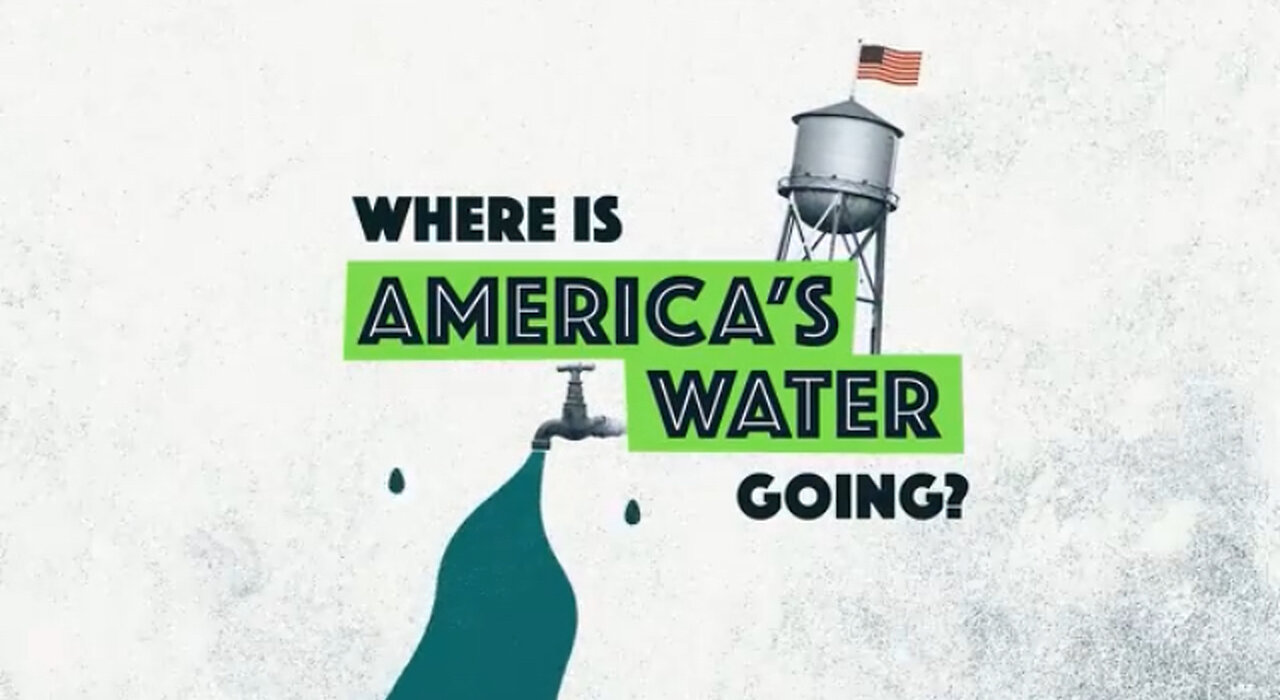Premium Only Content

Who's Taking America's Water?
California, a state often romanticized for its sunshine and celebrity, is facing a critical water shortage that threatens its way of life. The once-mighty Los Angeles River, a symbol of the state's cinematic allure, now stands as a stark reminder of environmental neglect. This iconic waterway, once teeming with life, is now a polluted scar on the urban landscape, mirroring the state's deeper ecological challenges.
At the heart of California's water crisis lies unsustainable consumption. Agriculture, a cornerstone of the state's economy, is a major culprit. While essential for feeding the nation, the cultivation of water-intensive crops like alfalfa, often destined for cattle feed, has placed immense strain on the state's water resources. This disproportionate allocation of water to agriculture, coupled with the urban sprawl characterized by expansive lawns and swimming pools, has exacerbated the problem.
The Colorado River, a vital lifeline for millions, is drying up at an alarming rate. Overconsumption and the impacts of climate change have pushed this once-mighty river to the brink. Antiquated water rights laws, which prioritize historical users, further compound the crisis. As the West grapples with a future of increasing aridity, drastic changes are imperative.
Diversifying crops, adopting advanced irrigation technologies, and investing in water conservation infrastructure are essential steps toward a sustainable water future. However, a fundamental overhaul of water allocation laws is equally crucial. California, and indeed the entire American West, stands at a crossroads.
The decisions made today will have far-reaching consequences for generations to come. It is imperative that policymakers, farmers, and urban residents work collaboratively to find equitable and sustainable solutions to this pressing challenge.
Directed by: Matt Nelsen
-
 LIVE
LIVE
vivafrei
1 hour agoEp. 254: China to Pay $24 BILLION? Who Owns Embryos? Tulsi was RIGHT on Syria! Prorogation & MORE!
19,648 watching -
 LIVE
LIVE
MyronGainesX
11 hours ago $4.99 earnedFormer Fed Explains Gabby Petito's Murder
2,233 watching -
 LIVE
LIVE
Nerdrotic
1 hour agoInvestigations into the Unknown with Micah Hanks | Forbidden Frontier #093
1,146 watching -
 18:54
18:54
The Rubin Report
6 hours agoHow One Woman Outsmarted Pornhub & Exposed Its Dark Secrets | Laila Mickelwait
64K56 -
 LIVE
LIVE
Major League Fishing
4 days agoLIVE! - Bass Pro Tour: Stage 3 - Day 4
490 watching -
 1:05:28
1:05:28
Sports Wars
8 hours agoLebron GOES OFF Over Bronny Hate, Pereira LOSES Belt To Ankalaev At UFC 313, Xavier Worthy Arrested
55.8K10 -
 10:27
10:27
Tactical Advisor
1 day agoDMR or SPR for Civilian Use?
55K6 -
 8:21
8:21
DEADBUGsays
1 day agoThe Crossbow Killer
58.6K13 -
 8:40
8:40
Tundra Tactical
1 day ago $9.78 earnedThe Executive Order Wishlist.
60.7K2 -
 7:22:52
7:22:52
SpartakusLIVE
1 day agoSaturday SPARTOON Solos to Start || Duos w/ StevieT Later
150K4